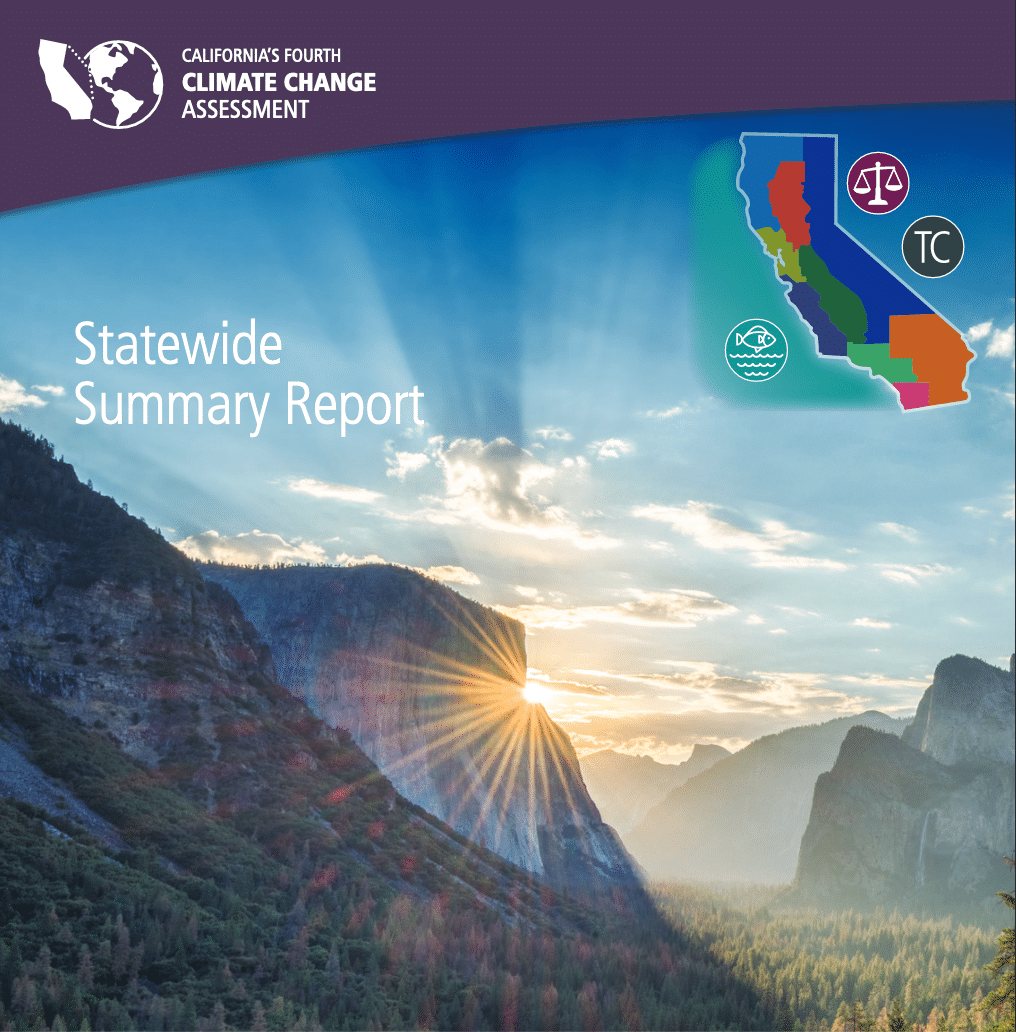Climate Change
California’s Third and Fourth Climate Change Assessments
Our all-out effort to reverse climate change is under way — yet wisdom tells us to be prepared for its impacts. Where is California most vulnerable to rising seas, melting snows, climbing temperatures, and other effects of a warming planet? Every region, every town must assess the risks and make plans to adapt. A mighty research effort has furnished tools.
CIEE managed two expansive studies of California’s vulnerability to climate change, the Third (completed in 2012) and Fourth (2018) California Climate Change Assessments. Funded by the California Energy Commission and the California Natural Resources Agency, these complex and far reaching studies involved dozens of principal investigators at multiple UC campuses and other institutions. What do rising sea levels mean for coastal planning and operation of the major airports, industry, and communities situated on California’s shore? With the vital Sierra snowpack shrinking, can California ensure ample water for homes and for its world-leading agriculture and wine industries? And, as temperatures climb, where is California most at risk for devastating wildfires or public-health threats to our most vulnerable citizens? California’s Climate Change Assessments pinpoint serious risks in these and a remarkable range of other areas.
The goal was to give planners, public-health officials, land-use managers, and others the research-backed basis they need to develop strategies to adapt to the impacts of climate change. California legislation now requires communities to consider these impacts in planning, but they need better tools to do it. CIEE-managed work developed technologies for the next iteration of CalAdapt, the state’s web-based modeling tool. The results extend modeling capabilities down to a regional scale, zeroing in on the precise data people need to make sound local decisions
Communities and ecosystems worldwide are already shouldering the effects of climate change. Rising sea levels are displacing residents of some coastal regions and islands, including Native Americans along Louisiana’s coasts. Extreme weather events, like Hurricane Sandy, are increasingly common. In California, where more than a million people could be affected by sea level rise, a persistent five-year drought has people worried about the state’s drinking water supplies and agricultural sector, even as the lack of rainfall and snowpack combined with historic high temperatures trigger more and increasingly extreme wildfires each year. Just as research-driven policy must help us mitigate the emissions that exacerbate global climate change, so must it enable us to prepare for and thrive as the new normal unfolds here in California.
Operating at the intersection of Science & Technology, Policy, and Business, the CIEE is particularly well equipped to facilitate and manage multiple research projects under these multi-million dollar agreements. These projects focused primarily on investigating ways to help California communities and ecosystems adapt and build resilience in the face of climate change, and fall under seven key themes:
1. Climate Change, Habitat, and Wildfires: Impacts and Management Options
2. California’s Working Lands: Carbon Sequestration for Adaptation and Mitigation
3. Sea-Level Rise, California’s Coast and Ocean Ecosystems
4. Water Security and Long Droughts
5. Forecasting to Support Climate-Resilient Decision-making
6. Preparing for Emergency Management in a Changing Climate
7. Funding and Implementing Adaptation Projects and Measures in California

